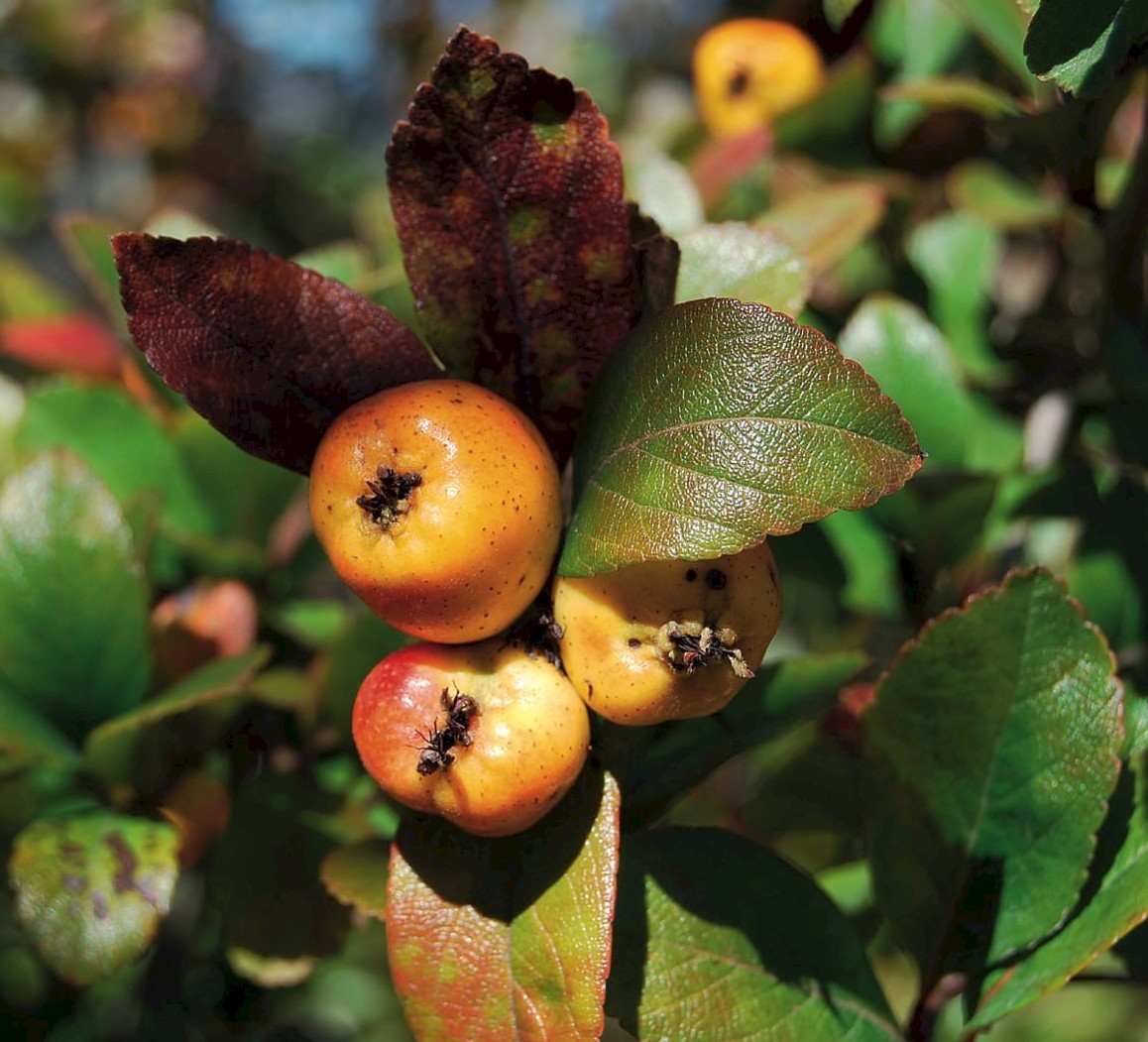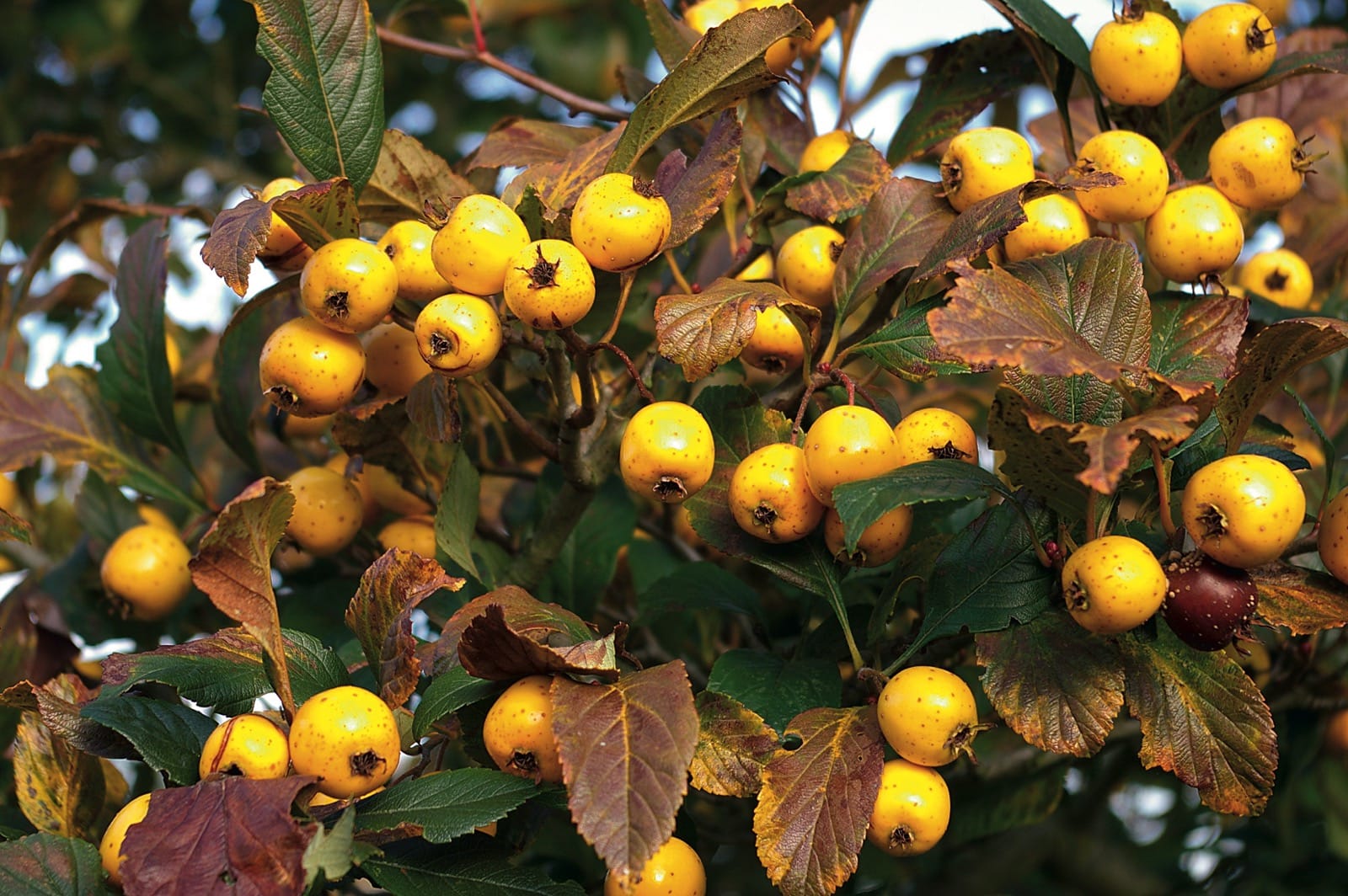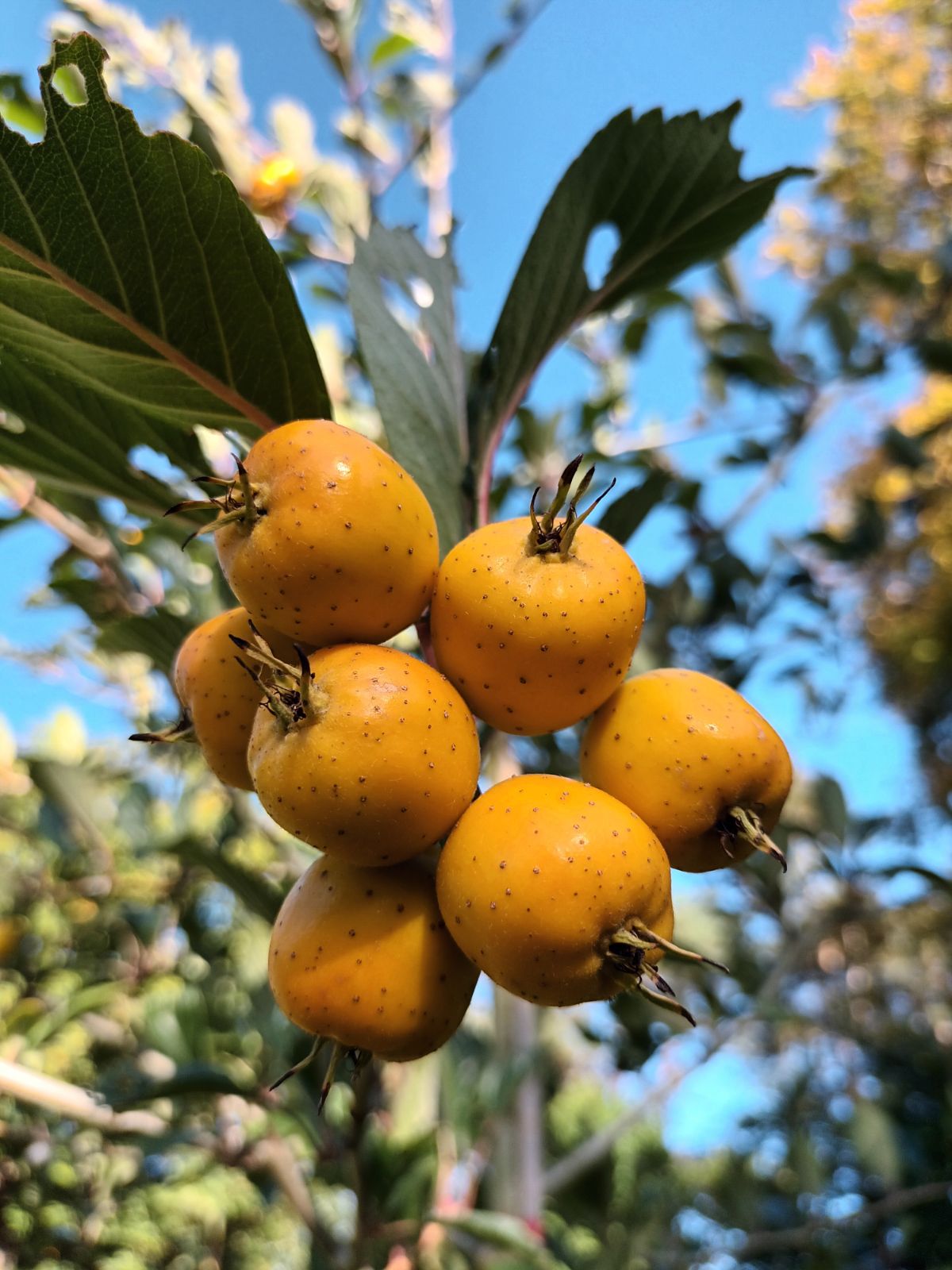Crataegus mexicana
Sponsor
Kindly sponsored by
This genus has been sponsored and new text is being prepared.
Credits
Article from New Trees by John Grimshaw & Ross Bayton
Recommended citation
'Crataegus mexicana' from the website Trees and Shrubs Online (treesandshrubsonline.
Genus
Common Names
- Tejocote
Synonyms
- C. pubescens f. stipulacea hort.
- C. pubescens var. stipulacea (Loudon) Stapf
- C. stipulacea Loudon
- C. stipulosa (HBK) Steudel
Other taxa in genus
- Crataegus ambigua
- Crataegus apiifolia
- Crataegus aprica
- Crataegus azarolus
- Crataegus baroussana
- Crataegus brachyacantha
- Crataegus chlorosarca
- Crataegus chrysocarpa
- Crataegus chungtienensis
- Crataegus coccinioides
- Crataegus crus-galli
- Crataegus cuneata
- Crataegus × dippeliana
- Crataegus douglasii
- Crataegus dsungarica
- Crataegus durobrivensis
- Crataegus flabellata
- Crataegus flava
- Crataegus henryi
- Crataegus heterophylla
- Crataegus intricata
- Crataegus jozana
- Crataegus laevigata
- Crataegus × lavallei
- Crataegus macracantha
- Crataegus marshallii
- Crataegus meyeri
- Crataegus mollis
- Crataegus monogyna
- Crataegus nigra
- Crataegus oliveriana
- Crataegus orientalis
- Crataegus oxyacantha
- Crataegus pedicellata
- Crataegus pentagyna
- Crataegus phaenopyrum
- Crataegus pinnatifida
- Crataegus pruinosa
- Crataegus prunifolia
- Crataegus pseudoheterophylla
- Crataegus punctata
- Crataegus sanguinea
- Crataegus spathulata
- Crataegus stipulacea
- Crataegus succulenta
- Crataegus tanacetifolia
- Crataegus tomentosa
- Crataegus uniflora
- Crataegus viridis
- Crataegus wattiana
- Crataegus wilsonii
Tree to 7 m. Branchlets robust; thorns straight and stout, 3.5–5 cm long. Leaves deciduous, leathery, 3.5–7.5 cm long, lanceolate to elliptic to narrowly obovate, upper surface somewhat pubescent, lower surface tomentose, particularly on the veins, six to eight secondary veins on each side of the midrib, margin unlobed, finely to coarsely serrate, apex acute; petiole 0.1–0.6 cm long; stipules deciduous. Inflorescence corymbose to almost umbellate, with 3–12 flowers; pedicels pubescent. Flowers white (rarely pinkish), 1.5–2 cm diameter; hypanthium bristly, sepals triangular and tomentose with entire-serrate margins, petals circular, stamens 20 with pink, purple or reddish anthers. Fruit (1.2–)1.5–2.5 cm diameter, spherical to turbinate, yellow to golden or copper-orange, sepals persisting at the crown, seeds four to five. Flowering February to March (to April) (Mexico). Phipps 1997. Distribution GUATEMALA; MEXICO: Guanajuato, Hidalgo, Jalisco, México, Michoacán, Oaxaca, Puebla, Querétaro, San Luis Potosí, Veracruz. Cultivated in Costa Rica. Habitat Extremely varied. Often cultivated for its edible fruit. USDA Hardiness Zone 8–9. Conservation status Not evaluated. Illustration Phipps 1997; NTxvi, NT280, NT286. Cross-references B786 (as C. stipulacea), K401 (as C. pubescens f. stipulacea).
Crataegus mexicana, known as Tejocote in Mexico, is an important fruit-bearing plant, producing masses of large yellowish fruits that can be eaten from the hand or as a jelly, and may remain on the tree into winter, unless removed by either humans or birds (Hogan 2008). Some clones have been selected locally for the quality of their fruit. The fine visual effect of the fruit of this species has been inherited by its offspring C. ×lavallei, although in this hybrid – with male parent probably C. calpodendron (Phipps et al. 2003) – the haws are orange-red. Crataegus mexicana is unfortunately less hardy and is seldom found in European arboreta, although it is possible that some individuals are present under the name C. stipulacea Loudon (see Bean: B786). Plants under this latter name have been considered to be hardy where C. mexicana is not (Phipps et al. 2003), but there seem to be no significant differences, and all are now treated as C. mexicana. There are at present some young trees of wild-origin C. mexicana in cultivation in southern England, most notably at the Sir Harold Hillier Gardens, where there are several derived from collections made by Allen Coombes, the tallest of which has reached 3.9 m (2007); others are growing at Thenford House and at Kew. It is more successful in western North America – including one particularly fine tree at Berkeley – but although tolerant of dry summer conditions it does better with extra irrigation (Hogan 2008). It is generally more or less evergreen, with broad, shiny dark green leaves that may take on purplish tints in winter. Defoliation may occur if temperatures drop below –8ºC, but it will tolerate temperatures to at least –18ºC (Hogan 2008). In areas with cooler summers than California or Mexico it is probable that good ripening is needed for full hardiness to be achieved, and a warm sunny site should be selected. Its fruiting effect in the winter should not be overlooked.



